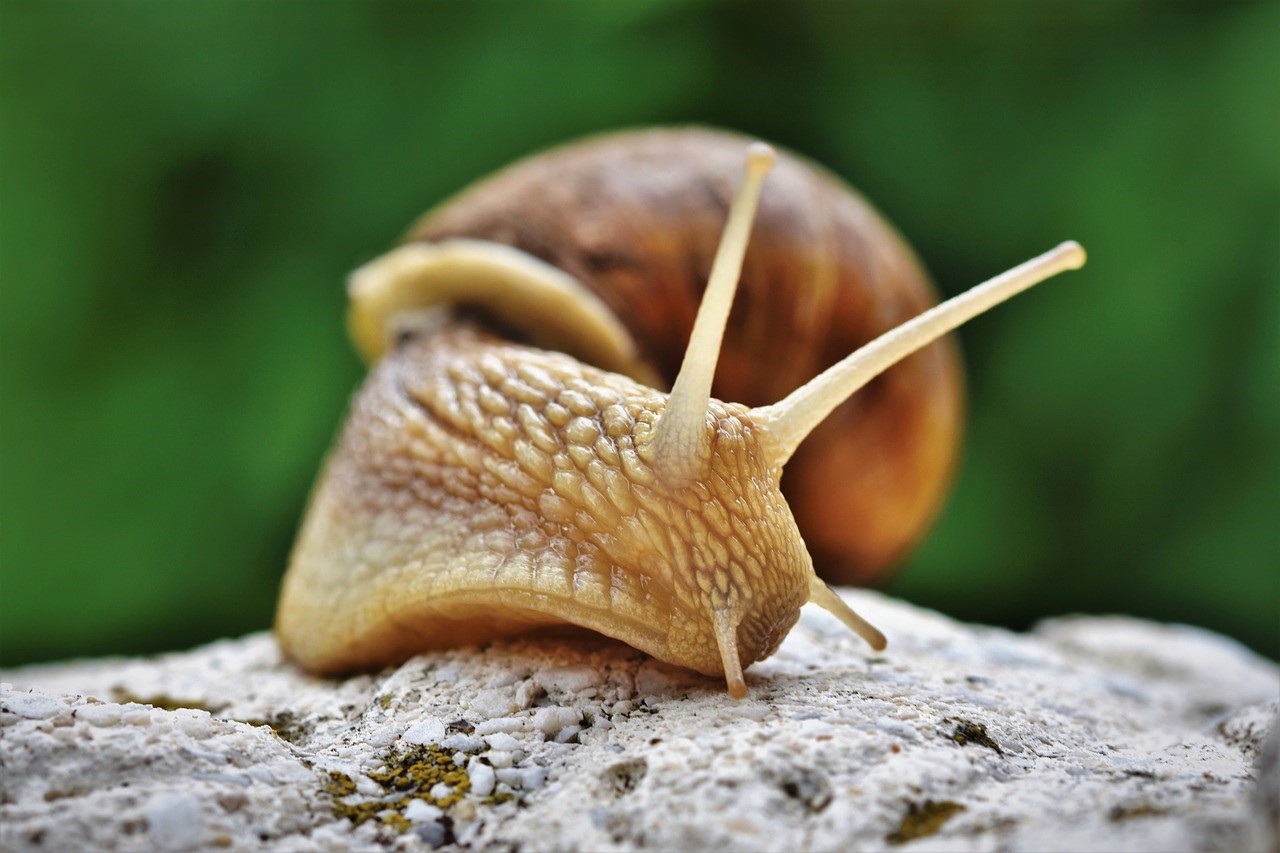Heliciculture is a good source of income for farmers as its products are highly beneficial as food and for the pharmaceutical industry. Both industries require the highest quality of snail product. It is important to understand that the profitability of the production system largely depends on the quality of housing at each stage of snail’s life cycle. Housing has an influence on breeding, feed conversion ratios, and quantities of snail slime produced.
One housing option for snails is free range pens. These pens are large mini-paddock pens: a fenced area of up to 10 by 20 m, planted with plants, shrubs, and trees that provide food and shelter from wind, sun, and rain.
In the same structural form as a mini-paddock pen, the vertical fence must be extended inwards to prevent snails from escaping. If the fence is constructed of fine chicken wire mesh, the overhang is not obligatory because snails dislike crawling on wire mesh. The fence must be dug at least 20 cm into the ground. These pens can be completely enclosed and roofed.
Generally free-range pens can be used as a sole snail enclosure in an extensive snail farming system, or as growing and fattening pens in a semi-intensive production system.
In the extensive snail farm, the entire life cycle of the snail takes place within the open pen: mating, egg laying, hatching, hatchling development, and growth of the snails to maturity. Snails feed on the plants provided in the pen.
In a semi-intensive snail farm the pens are used as growing and fattening pens for adult snails, which were raised through the egg hatchling to juvenile stages in hutch boxes or trench pens.

(Source: www.inisescargot.ie)
The advantage of a simple fenced free-range pen is that it is easy and cheap to construct, and management is limited to occasional replanting of food and shelter plants. Provided that the vegetation within the pen is kept well, additional feeding of the snails is not necessary.
A fully enclosed and roofed pen can be expensive to build, and if a concrete floor is used, an apron and a drain are to be included in its construction.
Free-range pens have several disadvantages namely: they require more land than other types of snail farming; it is difficult to locate and protect eggs and small snails which may lead to poor disease management and higher mortality rates compared to other snail production systems; snail performance in free range pens is difficult to track, and therefore more efficient and effective record keeping is necessary; and predators and poachers can easily gain access to open type free range pens.
Quality feed needed
Optimum snail production is not only determined by the quality of housing but also by the food the snails are given. The distinction between extensive, semi-intensive and intensive snail farming systems applies not only to housing, but also to feeding.
In an extensive system, snails feed only on vegetation planted in their pens specifically for that purpose. In a semi-intensive snail farm, external feed is provided to hatchlings, juveniles, and possibly to breeding snails housed in hutch boxes or trench pens. In an intensively managed snail farm, all snails, at whatever growing stage, are always provided with external feed. Snails are kept in hutch boxes or trench pens.

(Source: thenewgreece.com)
In very intensive systems, the snails are fed a formulated snail feed mix containing all the proteins, carbohydrates, minerals, and vitamins required for optimal growth. Snails are housed in boxes or trench pens.
Snails are vegetarian and will accept many types of food. All snails will avoid plants that have hairy leaves or produce toxic chemicals, like physic nut (Jathropa curcas). Young snails prefer tender leaves and shoots; they consume about twice as much feed as mature snails.
As they get older, mature snails increasingly feed on detrited fallen leaves, rotten fruit, and humus. Older snails should be fed the same items as immature snails. If a change in the diet has to be made, the new food items should be introduced gradually.
Snails need carbohydrates for energy, and protein for growth. In addition, they require calcium (Ca) for their shells, as well as other minerals and vitamins. Snail meat is low in crude fibre and fat; for that reason, these components are of minor importance in snail feed.
References
Rygało-Galewska, A., Zglińska, K., Niemiec, T. (2022) Edible Snail Production in Europe. Available at: https://www.mdpi.com/2076-2615/12/20/2732
Helicicultural Entrepreneurship. Available at: https://www.turkeytrainings.com/heliciculture
Snail Farming Startup Guide. Available at: https://www.agri4africa.com/snail-farming-startupguide/
A Practical Approach to Backyard Snail Farming. (1998) Available at: https://www.ajol.info/index.php/njap/article/view/124545
Akharume, C. O., Alao, B. O., Eyinade, G. A. (2019) Costs and returns analysis of smallholder snail production in southwestern Nigeria. Available at: https://serialsjournals.com/abstract/21186_chap-2_celestine_ohi_akharumechapter_2.pdf
Ngenwi, A. A., Mafeni, J. M., Etchu, K. A., Oben, F. T. (2010) Characteristics of snail farmers and constraints to increased production in West and Central Africa. Available at: https://idl-bnc-idrc.dspacedirect.org/bitstream/handle/10625/48747/IDL-48747.pdf









